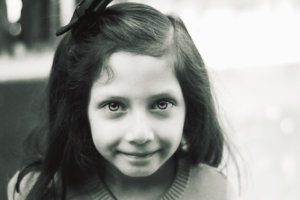 Oregon’s Child Welfare is a major partner of Oregon Child Abuse Solutions. At the local level, child welfare caseworkers work closely with OCAS Children’s Advocacy Centers. But, what is child welfare’s role? And how do child welfare caseworkers make decisions about child safety?
Oregon’s Child Welfare is a major partner of Oregon Child Abuse Solutions. At the local level, child welfare caseworkers work closely with OCAS Children’s Advocacy Centers. But, what is child welfare’s role? And how do child welfare caseworkers make decisions about child safety?
The role of child welfare is to ensure that a child’s home is safe. Child welfare professionals, called caseworkers, along with law enforcement officers, may be the first professionals to have contact with a child or family. Typically, if the accused abuser is not residing in the home, or is a stranger, the investigation will be outside of the role of a caseworker and handled by law enforcement or others. So what types of information do caseworkers collect to make decisions?
The Oregon Safety Model is the tool used by Oregon Child Welfare to ensure child safety. One of the most important aspects of the model is understanding the five “safety threshold criteria.” The “safety threshold criteria” are five criteria used in the child protective services assessment: severity, imminence, out of control, vulnerable child, and observable.
“Severity” may include serious physical injury, significant pain and suffering, disability, terror or extreme fear, impairment or death. The main thing to keep in mind is that the agency is not categorizing severity in the context of a single event or the reported maltreatment, but rather the likelihood that without intervention the threat will likely severely impact a child’s development or functioning in the near future.
“Imminence” means that the threat is likely to occur in the very near future if left unchecked.
“Out of control” refers to the concept that there is no adult in the home that can stop, prevent, or otherwise control the family condition or threat. This criteria refers to the family condition as a whole – not to be confused with a caregiver looking or acting in a manner that may be deemed ‘out of control’ in some way.
“Vulnerable child” is often confused with a child’s age. However, in the Oregon Safety Model this refers to a child’s ability to protect him or herself. The caseworker must consider any power differential between the child and adults, special needs, trauma, and developmental stage.
The last criteria in the safety model is “observable” and often the least understood. When analyzing the observable portion of the safety threshold criteria, the caseworker must describe, in specific behavioral ways, the family condition that is making the child unsafe. This is not about observing a bruise on a child or a cluttered home – it is about having a clear understanding of the behaviors, attitudes, and circumstances occurring in the family that contribute to the threat.
If all five “safety threshold criteria” are met, then Oregon Child Welfare is obligated to intervene in some way to ensure child safety. Often, if there is enough evidence to intervene and still unanswered questions about the child’s experiences, caseworkers will refer children to children’s advocacy centers.
Though caseworkers are trained, they are not medical professionals or trained forensic interviewers practicing under the guidance of the Oregon Interviewing Guidelines. As close partners, caseworkers rely on the expertise of children’s advocacy centers to guide their decisions and gain a fuller understanding of the child’s experiences. Child welfare caseworkers are important partners to our centers across the state.

